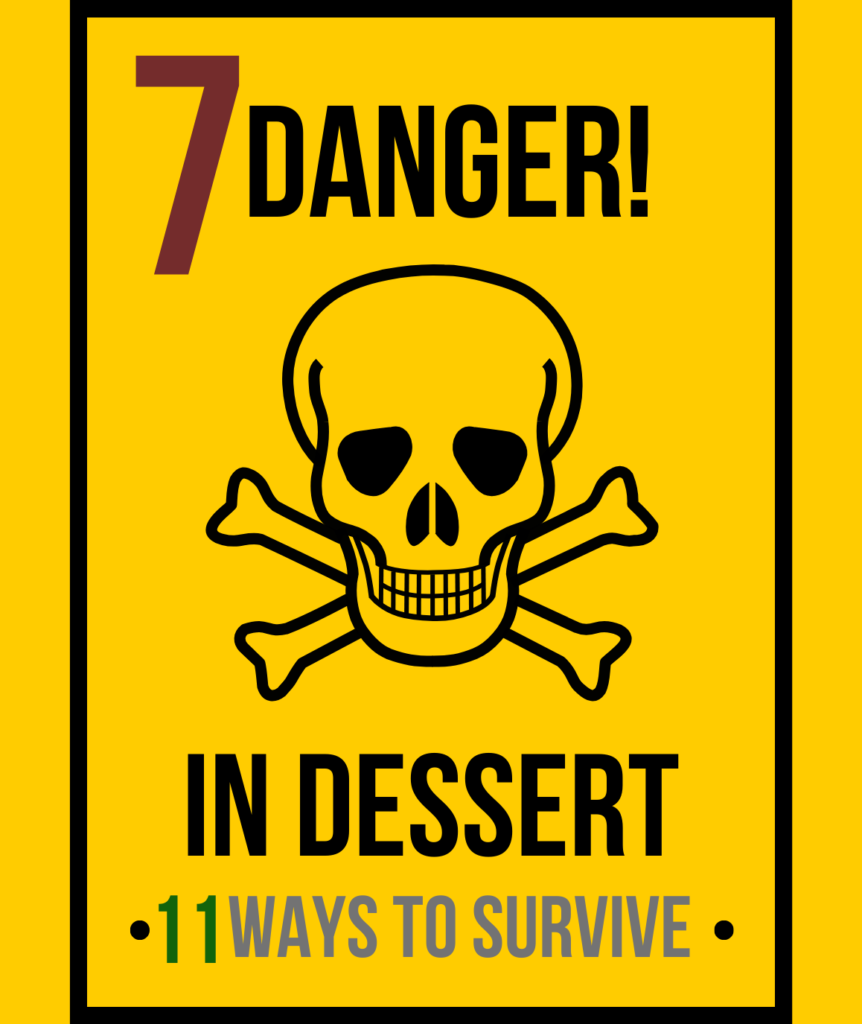
Surviving in the desert requires preparation, so if you must survive, the read this article to the end

Dangers in the Desert:
- Dehydration:
- Lack of water in the desert can lead to dehydration, causing weakness, dizziness, and confusion.
- Extreme Temperatures:
- Deserts often experience extreme temperature fluctuations, with scorching heat during the day and freezing temperatures at night, exposing you to the risk of heatstroke or hypothermia.
- Limited Water Sources:
- Finding drinkable water in the desert can be a significant challenge, increasing the risk of dehydration.
- Sandstorms:
- Lack of Shelter:
- The desert’s vast expanse may leave you without natural shelters, exposing you to the elements.
- Wildlife Hazards:
- Some desert wildlife can be venomous or present other threats, posing a danger to your safety.
- Isolation:
- Deserts are often remote and isolated, making it challenging for rescuers to locate and reach you quickly.
- Abrasive sandstorms can reduce visibility, cause respiratory issues, and make navigation difficult.

Survival Strategies in the Desert:
- Carry Sufficient Water:
- Always carry an adequate supply of water, and ration it wisely to avoid dehydration.
- Protective Clothing:
- Wear loose, light-colored clothing to shield yourself from the sun during the day and keep warm at night.
- Sun Protection:
- Use sunscreen, sunglasses, and a wide-brimmed hat to protect yourself from the intense desert sun.
- Navigation Tools:
- Carry a map, compass, or GPS device to help navigate through the desert terrain and avoid getting lost.
- Build a Shelter:
- If you can’t find natural shelter, create one using available materials like rocks or clothing to shield yourself from the sun and wind.
- Signal for Help:
- Use reflective materials, mirrors, or brightly colored clothing to signal for help. Create large symbols or messages on the ground that can be seen from the air.
- Stay Cool:
- Conserve energy during the day, limit physical activity, and rest in the shade when possible to avoid overheating.
- Locate Water Sources:
- Look for signs of vegetation, animal tracks, or depressions in the ground that may indicate the presence of water. Use a solar still to extract moisture from the ground if necessary.
- Food Sources:
- Learn about edible desert plants and insects to supplement your food supply.
- Stay Calm:
- Panic can exacerbate survival challenges. Stay calm, assess your situation, and prioritize your actions.
- Emergency Signaling:
- Use a whistle, flashlight, or any other available signaling device to attract attention. Establish a routine for signaling during specific times to increase the chances of being noticed.
Surviving in the desert requires preparation, resourcefulness, and resilience. Always inform someone about your plans and expected return time when venturing into the desert, and consider taking survival training to enhance your skills in extreme environments.